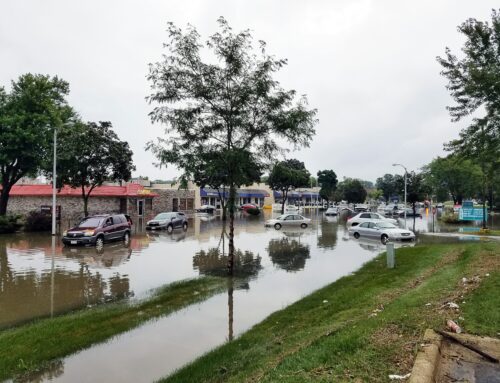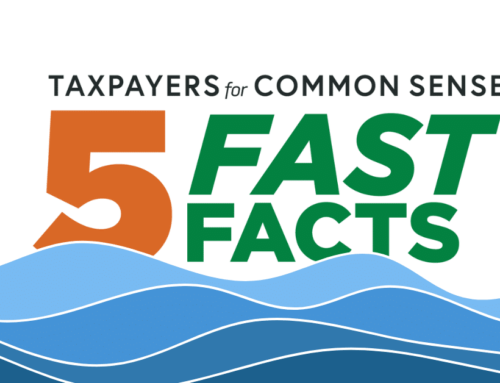Ms. Claire Jacquemin
Bureau of Reclamation
2800 Cottage Way, MP-700
Sacramento, CA 95825
August 4, 2005
Dear Ms. Jacquemin,
On behalf of Taxpayers for Common Sense, a national non-profit budget watchdog, I am writing to comment on the Bureau of Reclamation’s Draft Environmental Impact Statement for the San Luis Drainage Feature Re-evaluation. TCS strongly urges the Bureau to require the farmers of Westlands and other irrigation districts of the San Joaquin Valley to shoulder the cost of dealing with the drainage problem, rather than forcing this cost onto federal taxpayers.
Westlands has already been given significant subsidies, both to irrigate and drain its land. Much of the cost to irrigators was transferred to federal taxpayers by claiming “wildlife preservation” benefits, before the bird deformities at Kesterson were discovered. Together, the non-reimbursable cost paid by the federal government of bringing the water to and from Westlands has cost federal taxpayers $750 million.11 Federal taxpayers should not be forced to cover the costs that should be rightfully paid by the wealthy agribusinesses of the Westlands district to retire land that never should have been irrigated in the first place.
We understand that the Bureau has an obligation from the 9th Circuit Court of Appeals to provide drainage for this area, but the solution should not come entirely at taxpayer expense. The Bureau has put forth several possible alternatives for solving the drainage problem and reducing toxic selenium contamination. The Bureau has indicated in the DEIS that its preferred alternative will likely involve in-valley drainwater storage and land retirement. We believe strongly that the bulk of the cost of land retirement should be borne by the local governments and the irrigation districts. The Bureau would not have been forced into the position of providing drainage to this area if the Westlands Water District had not insisted on bringing lands into production that were known in advance to have a serious drainage problem.
Indeed, the 9th Circuit Court’s ruling did not absolve Westlands of its responsibility to solve its own drainage problems. In 1985, Westlands signed an agreement promising to take the lead in finding drainage solutions. Westlands should follow through with this commitment, instead of receiving further subsidies from the Bureau of Reclamation and federal taxpayers.
In addition, we are concerned that the DEIS does not address the alternative presented in the “Drainage Without a Drain” report.2 This report details a proposal for handling the selenium problem using only improved irrigation efficiency, drainwater reuse, and land retirement. This avoids the need to build evaporation ponds, which would result in enormous costs down the road. All of the in-valley alternatives would require construction of evaporation ponds, which in total acreage would be comparable in size to Kesterson Reservoir. The concentration of selenium in the water entering these ponds, 10 ppb, is higher than levels that have been known to be harmful. TCS strongly believes that the Bureau should investigate drainage alternatives that do not involve evaporation basins. Otherwise, we believe that the in-valley drainage alternatives are likely to result in another Kesterson situation, and taxpayers will be faced with the expense of both cleaning up that site and finding yet another drainage option.
Moreover, the Bureau is also engaged in a water contract renewal with the Westlands Irrigation District. However, under the DEIS proposed alternatives, up to almost half of the Westlands could be retired from production. If the Bureau adopts an alternative that involves retiring Westlands land, then the amount of water promised in the Westlands contract should be proportionately reduced. Otherwise the Bureau will be promising much more water than is actually required to irrigate Westlands, allowing the district to escape from the tiered pricing scheme of the Central Valley Project Improvement Act, which was designed to reduce federal taxpayer-financed water subsidies and institute a fairer system of water pricing. Further, allowing Westlands to retain these water rights will only perpetuate current drainage problems in other areas and provide an opportunity for the District to sell its excess water at inflated prices to other users.
Again, Taxpayers for Common Sense strongly urges the Bureau to investigate alternatives that do not involve evaporation ponds and to require irrigators to pay for the cost of the alternative adopted.
Sincerely,
Steve Ellis
Vice President of Programs







Get Social